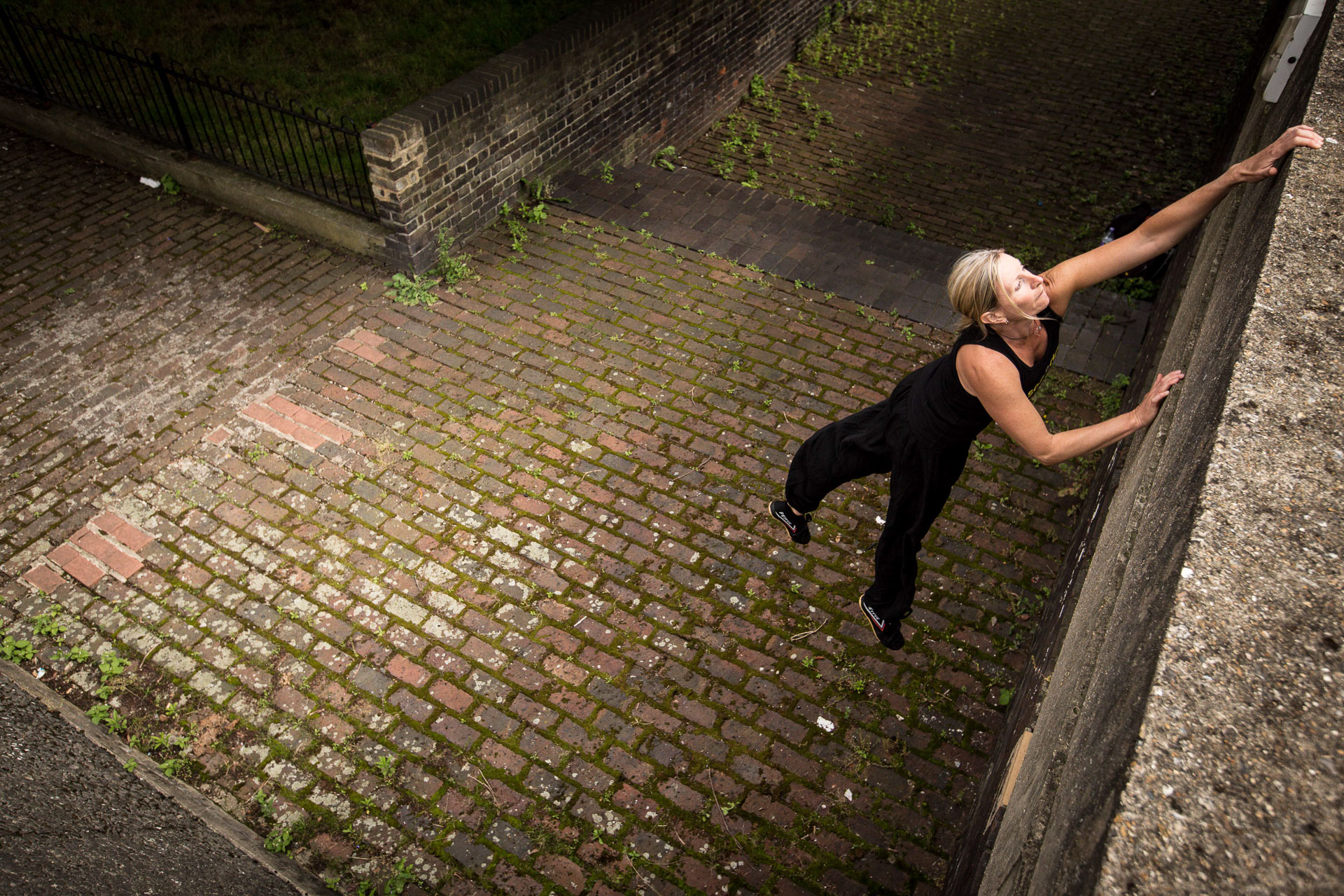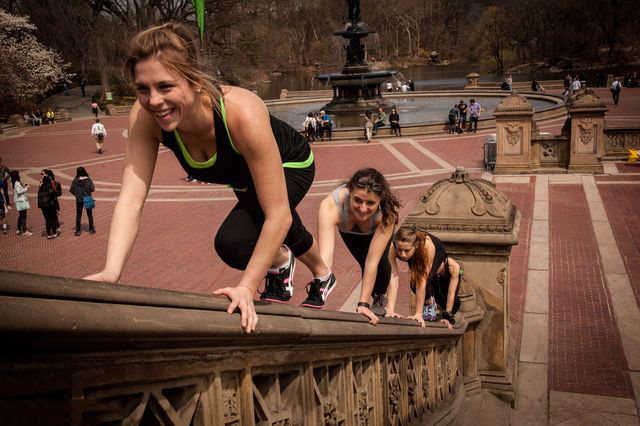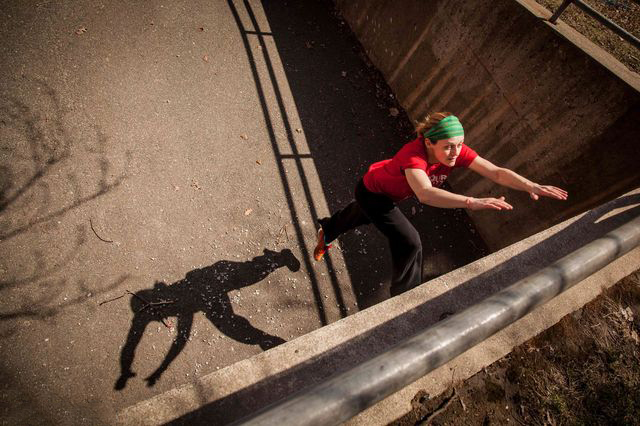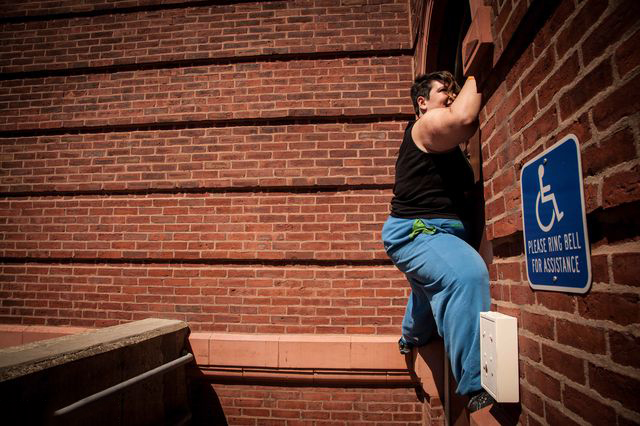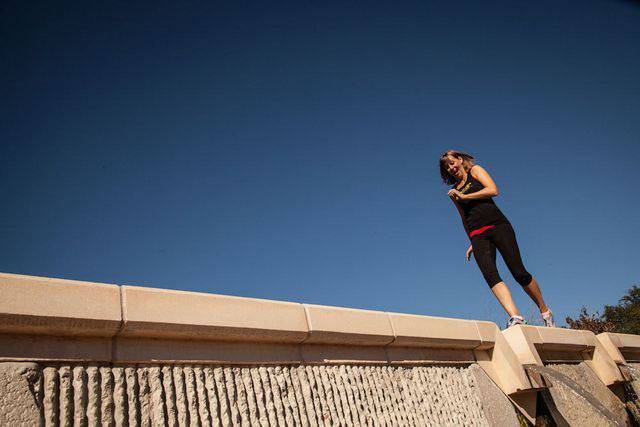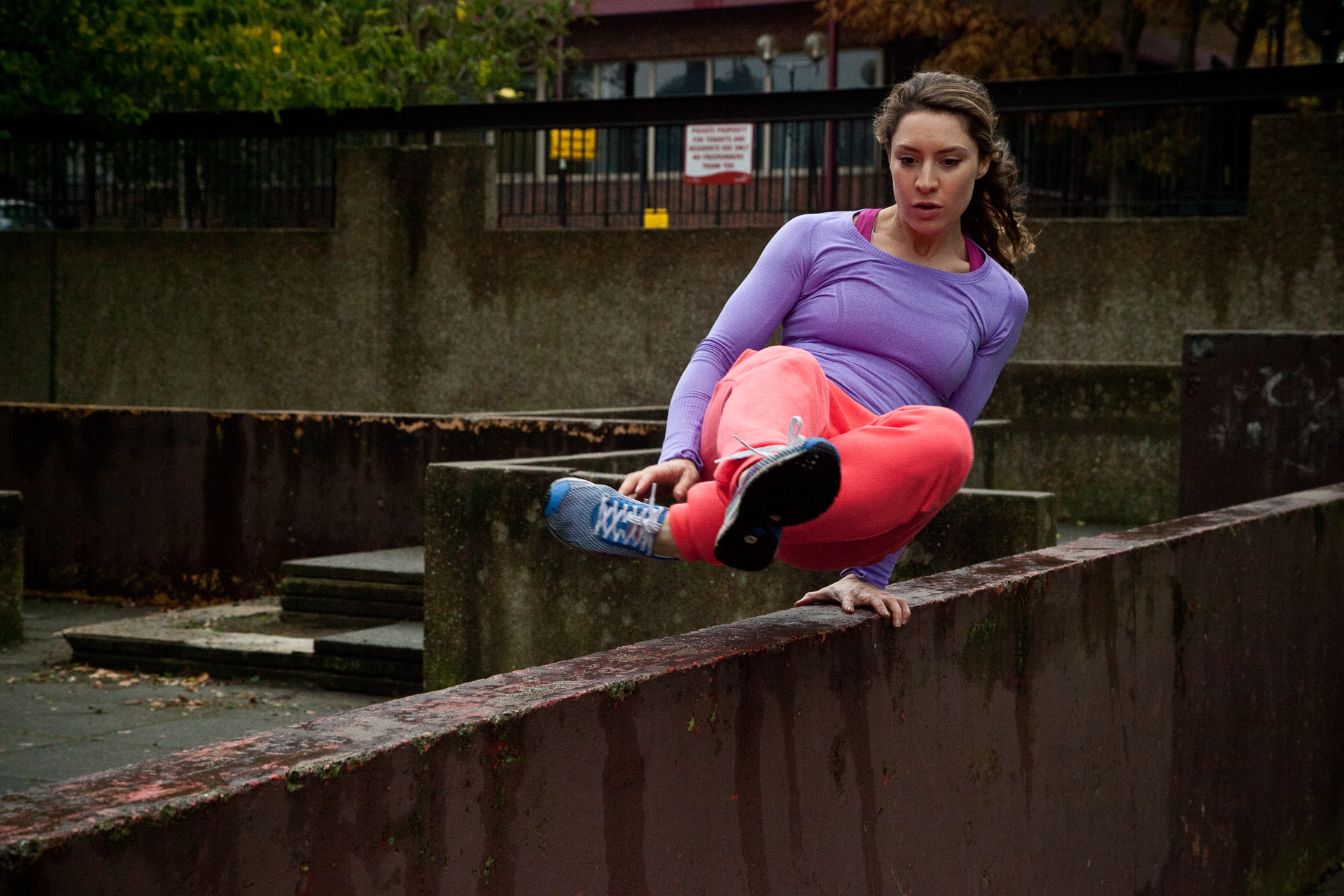Words by Julie Angel
I’d never seen women move like superheroes until I started researching and then training Parkour. It was 2005 and I was living in London. There were very few women in the world training Parkour and I was one of them and I was rubbish at it. I was scared of everything and didn’t spend much time training. I was 35 years old and doing a practice-based PhD in Documentary filmmaking and Parkour (yes such a thing does exist). Even though I thought I was sporty, the truth was I hadn’t done any real exercise for a decade.
Nobody knew what women were capable of in Parkour as there weren’t any women who had the same level and years of training as the guys. Other sporting and athletic disciplines provided examples of how high or far women could jump, how they could climb and overcome fear, and how they combined movements together in dance and gymnastics. There was something very original in how this outdoor body-centric discipline fused them all and only time would tell how women would respond.
“Young guys had their male power fantasies lived out thanks to Spiderman, Superman and Batman but where was the female inspiration?”
Young guys had their male power fantasies lived out thanks to Spiderman, Superman and Batman but where was the female inspiration? There were many examples of men doing Parkour but I’d never had the real or imagined role models, the women on walls, until I was lucky enough to start training with them.
